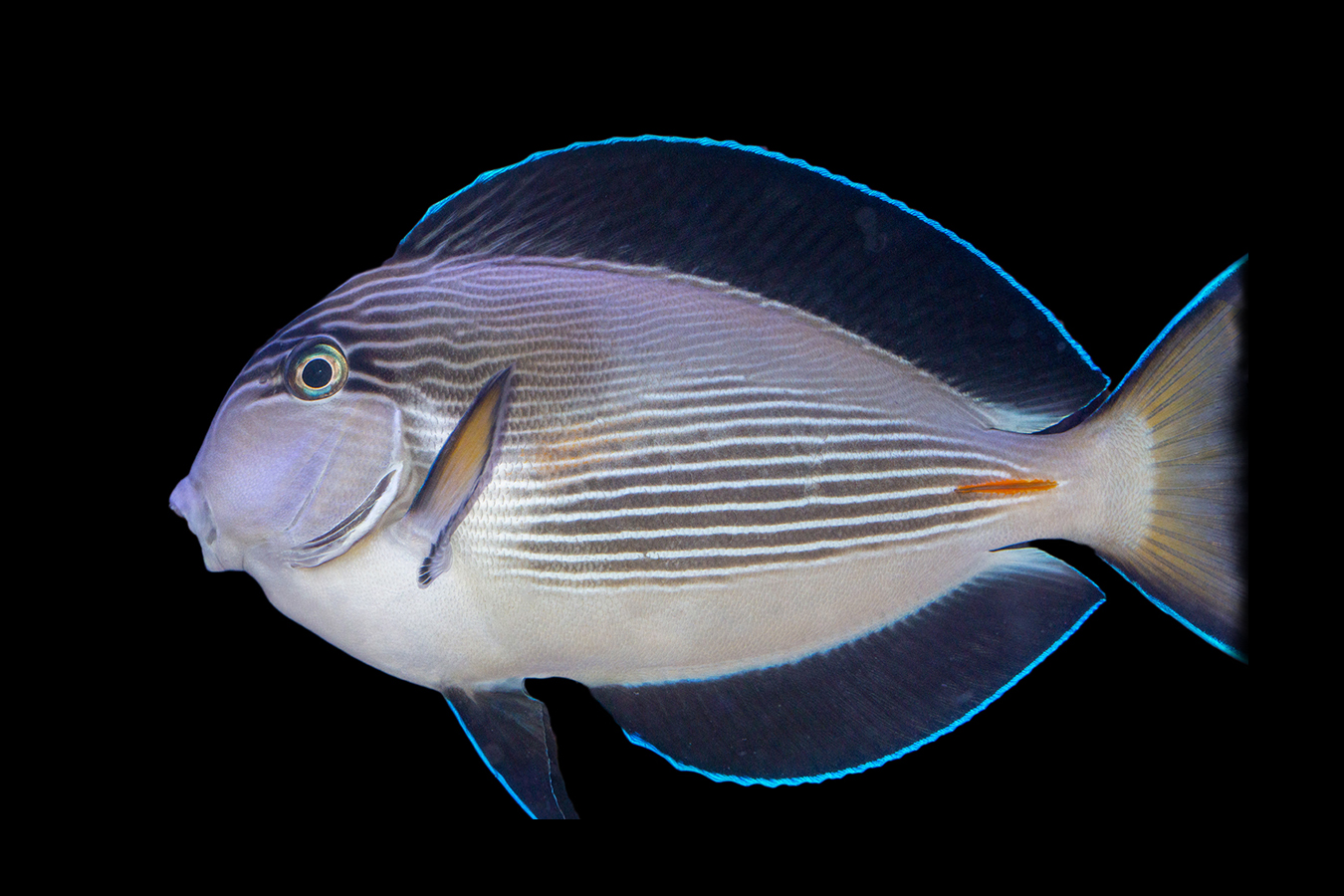Related products
Sohal Tang
Please Note: Due to variations within species, your item may not look identical to the image provided. Approximate size range may also vary between individual specimen.
Deep dive >
Quick Stats
- Dietry Requirements
- Compatible With
- Maximum Fish Size (cm)
- Minimum Tank Size (L)
- Same Species Aggression
- Other Species Aggression
- Care Requirements
The Sohal Tang is a hardy and generally reef safe fish that can be challenging due to its potential size and aggressive nature. The Sohal Tangs alluring beauty of contrasting and sometimes vermiculated stripes alternate from light to dark with most of its fins being jet black with electric blue outlining them.
Sohal Tangs can be very aggressive and should not be kept with other Tangs. They tend to be well-behaved with old tank mates but can be very aggressive to any new additions. They are only suited for large aquariums with other fish capable of handling their aggressive and domineering behaviour. They do well in very large reef systems with no other Tangs, and plenty of swimming room. It is recommended that they be the last fish introduced into the aquarium since they can be extremely territorial and aggressive toward tank mates. Due to its potential large size of 40 centimeters an aquarium of 1000 litres or more is recommended to properly house a Sohal Tang.
Although Tangs will eat meaty foods such as enriched brine and mysis shrimp, it is recommended that Tangs are offered plenty of marine based seaweed and algae.

